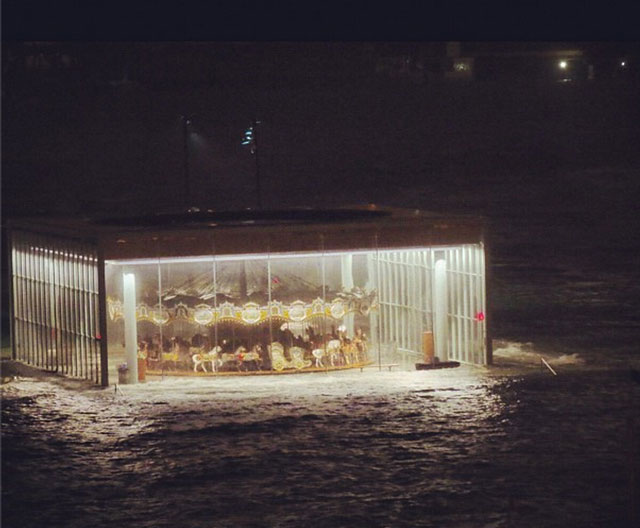October 30, 2012
how slender is the margin

Source, Via
Stephanie and I are safe and sound where we are, high and dry. A brief walk around the block this morning revealed broken tree branches, lots of leaves blown off the treees and some debris scattered in the streets. Sirens have sounded all night into the morning. Listening to the radio, reports have more than 450,000 people without power. There's a huge fire at Breezy Point across from Manhattan Beach and Coney Island. As soon as the sun rises, it will be time to call friends in Lower Manhattan to see if they are alright. The morning news damage assessments will tell us what the near future will be like. There is some speculation that the subway will be out for the rest of the week, a lot of people will not be working in the next few days. No doubt, our economy has had a punch to the solar plexus.
We are waking up to a city and a region with a little bit of complacency rubbed off. Richard Fernandez suggests that this might not be a bad thing, overall:
Storms are a good time to remember how slender is the margin on which civilization is built. Today?s miraculous cities are a going concern. Once they stop working they die. Millions of people are literally totally dependent on the grid and can survive outside it only for brief periods. Most households could not subsist for more than a month without steady deliveries of food, the refrigeration to preserve it and the continuous supply of potable water.Our art world thrives on transgression in a variety of ways*, and the comforts of modernity allow us to become complacent in how we flaunt signals of danger. The problem is that when we carelessly exploit the appearance of risk for a surplus of sexiness, we tend to forget the subtleties of civilization's slender margin. Danger signals have been flashed by those critics who have been marginalized by the art establishment here and there, no doubt they will be further dismissed by many in the cognoscenti, if they are heard from at all. I believe that a recapture of these subtleties is the way forward for art, the only way to write the subsequent chapters of art history that must be written if art itself is to survive.Modern urban civilization is in many respects like a ship of artificial order floating in an ocean of natural entropy. That order is enforced by the availability of energy. Once the energy that keeps entropy from entering its hull fails then disorder begins to flood like water through its arteries and channels like an inrushing flood. The virtual construct that is the 21st century mega-city begins to sink; not just gradually but quickly, terribly and catastrophically.
But unlike the ocean, which constantly reminds seafarers of its omnipresent menace, entropy does not manifest itself so clearly. It is scarcely visible when things ?work?. We only notice it when things stop working. Therefore modern civilized man often forgets the surrounding entropy exists.
He also forgets what keeps it at bay.
Energy, not only of the electrical kind, but of the sort that motivates human society, keeps things going. Energy is constantly pumping chaos out of the hull of civilization. Once it is exhausted then the ship goes dark and begins to settle into the deeps. In recent years it has become fashionable to accuse the West of having an excessive design margin.
* (this is no critique, I think this is fundamentally a definition of art, Western Art)
Postscript: Remember this, to keep these events in perspective.
UPDATE: [Liveblog] New York Art World Braces for Hurricane Sandy
Posted by Dennis at October 30, 2012 5:03 AM
Leave a comment